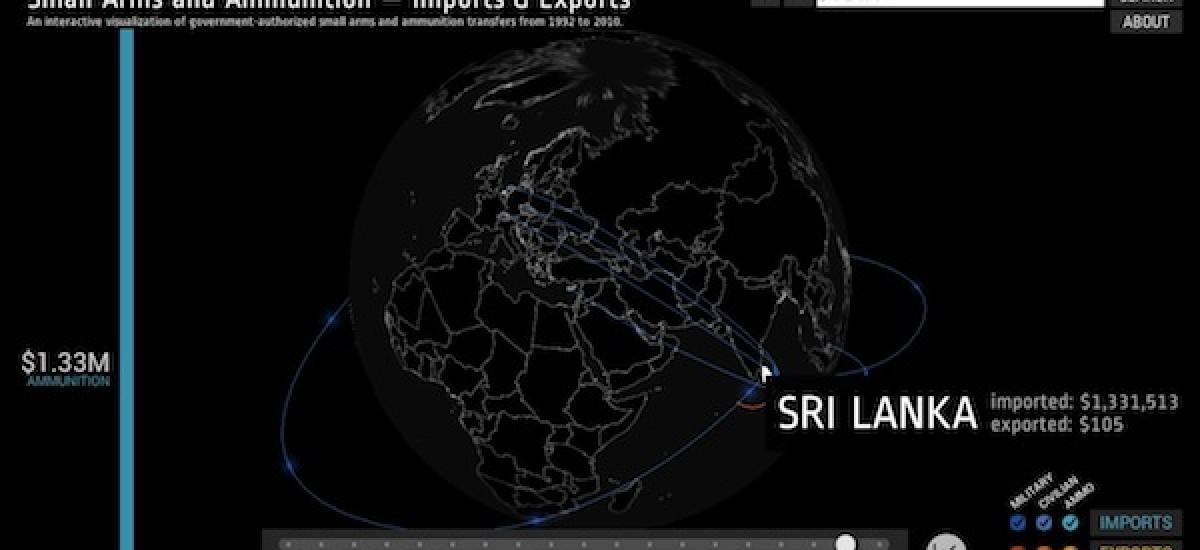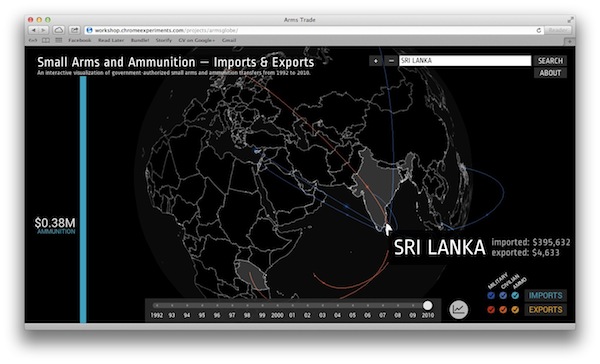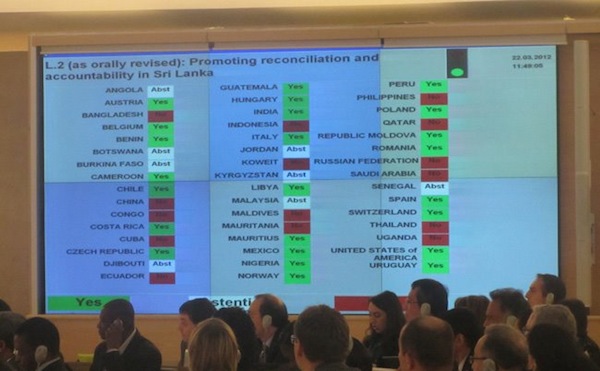Google has just released an interesting visualisation of the global small arms and ammunitions trade (works best in Google Chrome). For those with older browsers, a screencast of the visualisation can be viewed as an HD video below.
When disaggregated by country, Sri Lanka’s small arms and ammunitions imports since ’92 to 2010 are very interesting to study through this visualisation, which gives details of the country of origin as well as the sum spent on ammunition and arms per annum, generated from UN Statistics Division’s Commodity Trade Statistics Database known as COMTRADE. COMTRADE source data for the visualisation has been cleaned up by the Peace Research Institute Oslo (PRIO). As Google notes, “…the scale of the global trade in ammunition rivals the scale of trade in actual weapons, an insight underexplored by policymakers today in conflict prevention and resolution.”
In 2006, our primary arms suppliers are European countries, including the United Kingdom. But we also get supplies from Japan, other South-East Asian countries and the US.
For whatever reason, in 2007, there seems to be no trade with China, and Brazil emerges as a new supplier. In comparison to 2006, we are importing less from the EU, and the statistics indicate some measure of arms and ammunitions exports to Belgium and the UAE. Can readers conversant with the global arms trade shed some light on this? The US is a strong ammunitions exporter to Sri Lanka. As opposed to the previous year, there are arms and ammunitions imports from India as well. Unsurprisingly, given the onset of war, imports jump from $277,422 in 2006 to $1,230,656 during the course of the year.
In 2008, imports drop to $813,224, and the visualisation suggests there’s an increase in ammunition imports from India over the last year. Also this year, the US drops as a supplier of ammunition, but remains a source of arms imports. The data does not show for this year any export figures.
By 2009, both arms and ammunitions imports from the US have stopped. The total value of imports, $1,331,513, is a dramatic increase over 2008. Brazil remains a key supplier of arms. Of the total value of imports, a staggering $1,122,968 was paid to Brazil alone making it the single most important supplier this year. This is also significant increase from $751,003 paid to Brazil for supplies over 2008. We do not seem to have imported arms or ammunition from India this year.
2010 sees a dramatic reduction in arms and ammunitions imports. It is unclear what the $4,510 worth of exports to the UK is about this year. We are also exporting arms to Tanzania and of all places, the Seychelles, but these could be statistical anomalies given their very small values. India’s exported around $60,000 worth of supplies to Sri Lanka, dwarfing the $8,284 from the US. The Philippines has exported $34,372, and Singapore just over $9,000.
Interestingly, the highest ever sum of money spent on arms and ammunitions imports comes from 2000, under the administration of the then President Chandrika Bandaranaike Kumaratunge. The pulsating blue line is hard to miss. Of the total value of imports in 2000 ($9,061,456) a staggering $8,947,607 came from the Czech Republic.
Though the figures and statistics can and will be debated, it’s interesting to juxtapose the countries that have undergirded Sri Lanka’s war (from ’92 onwards, under successive governments) and the list of countries that supported the UN Human Rights Council Resolution on Sri Lanka in March this year.
If anything, the UN HRC voting map compared to the trade of arms and ammunition strongly suggests that the arms of foreign governments interested in strengthening accountability and human rights in Sri Lanka are not entirely in sync with other arms of government, including the private military industry, that have materially supported Sri Lanka’s war. This disconnect is one that Sri Lanka’s current regime has tirelessly sought to highlight, for entirely parochial reasons. That said, if there is now an interest in and commitment towards accountability within Sri Lanka by the international community, it begs the question – will there be any accounting of how foreign arms and ammunition flows contributed to gross human rights abuses in Sri Lanka?
Quis custodiet ipsos custodes?









